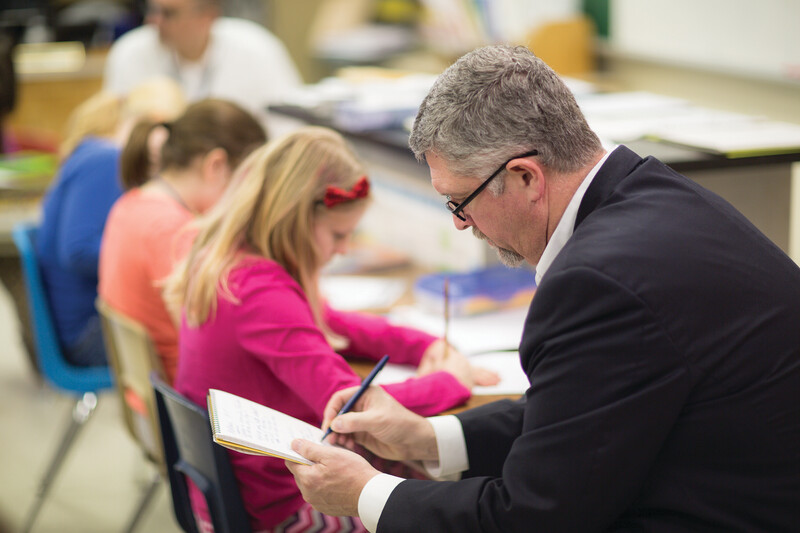School was to open in less than a week, and the renovation was dramatically behind schedule. The dust from the old brick and mortar had not settled, and the new wing had yet to be completed. The predictability that had been the rule in the well-ordered school I had been leading for years was gone.
Postponing the school's opening was out of the question, so we started the first day with classroom renovation unfinished. The resource center, gym, and faculty room were not yet available, and the teachers—accustomed to a week of preparation before the opening date—were barred from their classrooms until 24 hours before school opened.
We had little control over the situation. Obviously, we were not handy with jackhammers, nor were we allowed near scaffolds. To allay our panic, we searched for something we could control. We discovered that our attitude belonged solely to us and that we did have control over the way we framed the situation. We made a deliberate decision to transform our doom-and-gloom thinking into an opportunity for creativity.
Major crises confront schools everywhere. Lack of funding, pressure from high-stakes testing, unemployed parents, changing demographics, and increased class sizes are just a few of the factors that turn the normally difficult job of teaching into a challenge of gigantic proportions. In the midst of these challenges, principals still must run their schools, manage the operation, and lead instruction. Teachers must cope with increased demands from forces both outside and inside the classroom. There are, nonetheless, choices that are ours to make. Some of what my teaching colleagues and I learned during that year of unfinished construction might be applicable in other "crisis" situations.
Becoming a Team
Survival required everyone to work together. My role as principal had to change. I started asking teachers, What do we do now? and How can we manage? No idea was cast aside. Teachers felt empowered and thought of solutions I could neither have imagined nor enforced had they come from my office. Teachers rose to the challenge, and forever after they retained that sense of ownership.
Parents became our partners. We sent home a weekly "Construction Update" both electronically and with students. We assured parents that their children's safety was paramount and that teaching and learning were continuing in a healthy and effective manner. Parent complaints were minimal as they, too, understood the limitations under which we were working.
Changing Our Ways
The unsettled atmosphere forced us to concentrate on the essentials in classroom organization, teaching, and learning. We started asking what was essential and what was not. Could part of the gym serve as a temporary faculty room? Could teachers share work space with parent volunteers? Perhaps those volunteers could play different roles. School bells were not connected, so we learned to rely on clocks and watches for change of classes, lunch periods, and school's beginning and ending.
As the physical "boxes" in which we worked were dismantled, we started questioning all the other boxes we kept ourselves in. Were there different ways to organize kids for instruction? Could teachers share their traditional roles with specialists or paraprofessionals? The use of time and space became less rigid, as did our grade-level differences and standard class sizes.
We also took advantage of the opportunity to make "building" part of our curriculum. Kids visited the construction area, and workers became their teachers. We were amazed at how much math and science were embedded in the work. Students kept journals on the progress of the building, interviewed workers, and created art for the new wing. "Career education" took on a new dimension.
Our crisis not only nurtured our creativity, it challenged me, as principal, to think differently about my role. Teachers, more than ever, needed my support and affirmation. I tried to consistently recognize the hardships under which teachers worked and, in fact, flourished. In addition, our limited resources made it easier for me to justify paring down paperwork.
We also found that humor was essential. We held a regular "most awful happening" storytelling contest at our faculty meetings. Our faculty members channeled their frustration and anger into stories about the challenges they were facing, becoming contemporary folk heroes as we listened, laughed, and commiserated.
Moving Forward
Crises differ. Each school and each generation of educators confront situations beyond their control. Yet we continue. The yellow buses run, and children thrive with the support of teachers who care endlessly about them. Educators have always risen to whatever challenges have been thrown our way.
So bring on the challenges. We have been there and done that and will survive. Our commitment to kids, to schools, and to our profession extends beyond any obstacles that may come.








